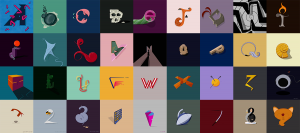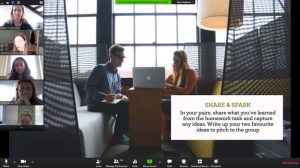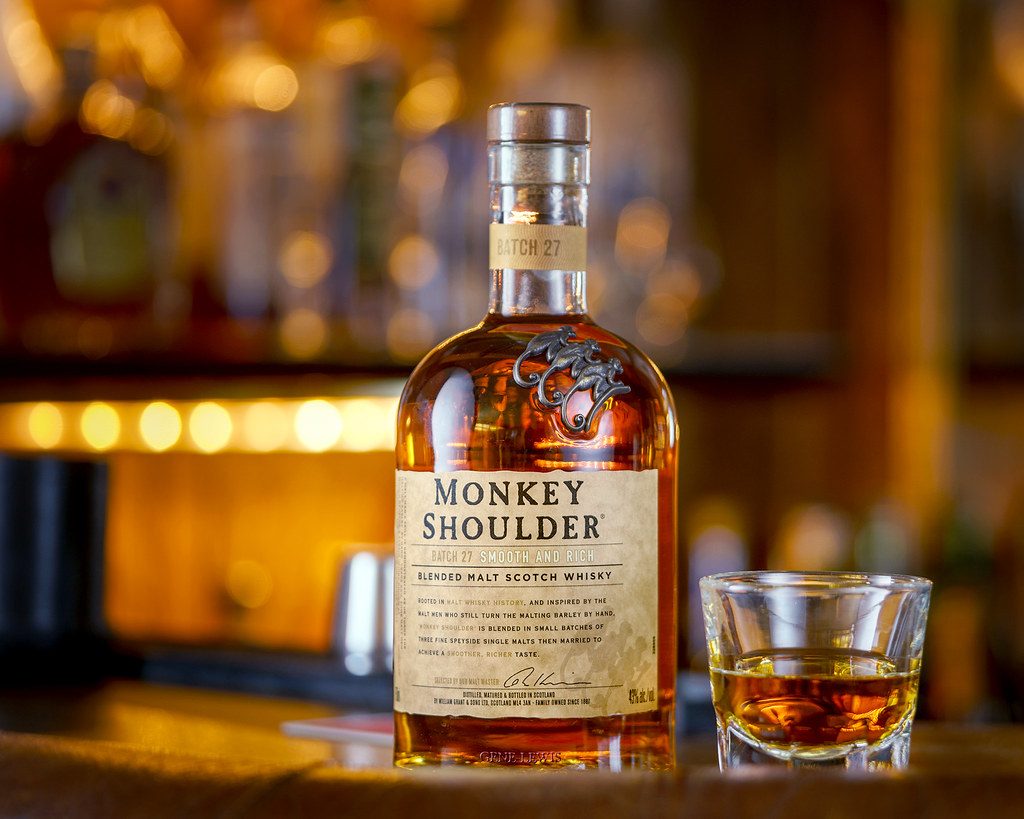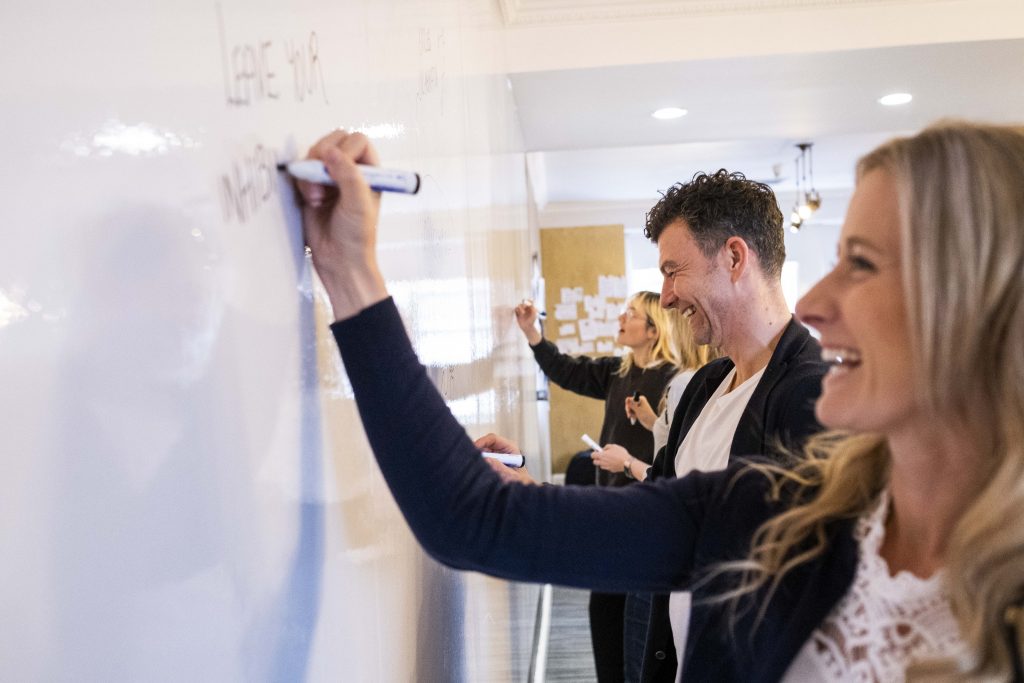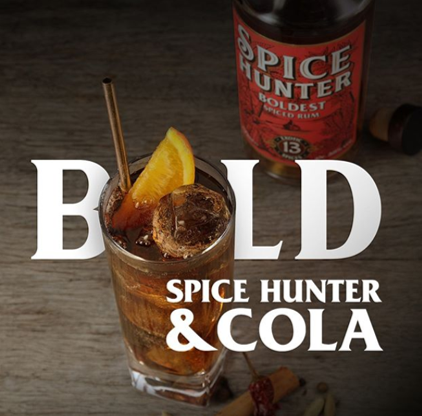Our Approach to Advertising Challenges
1. Create a routine and routinely create
We all know having a routine is a great way to keep motivated when there’s disruption in the world at large. And a great part of that routine is to challenge yourself to create every day. No matter how small or ‘creative’ it feels, forcing yourself to produce something is greatly rewarding and you may surprise yourself with the output.
I recently took part in the global ‘36 days of type’ challenge which encourages you to create a letter or number each day in any way you want (photography, craft, drawing, animation). For me it was a great opportunity to work on typography, and I challenged myself to bring a different personality and graphic treatment to each one. Challenges like this are especially great in our current remote world, as you feel part of a big community and the accountability of posting to your social channels each day encourages you to keep going.
A great lesson I’ve learned from this is to not fear mistakes. As Salavador Dali said: “Have no fear of perfection. You’ll never reach it.” The pressure of pushing out something original and creative every day (on top of the day job) encourages you to abandon perfection and create just for the joy of it. Embracing those mistakes could always lead to something greater! But when you hit a wall, sometimes it’s a good idea to just stop. Take a break, allow your mind to reset and come back afresh.
Creative challenges can be great for learning a new skill or experimenting with techniques and styles. And there are plenty of them out there. Adobe has its own daily challenge using Photoshop, and in October, thousands of creatives take part in ‘Inktober’ to practice hand-drawn illustration.
2. Share, share, share. (And don’t forget to look back)
It’s so easy to get caught up and lost in the now. But have you ever taken the moment to just pause and reflect on past work? Taking the time to remind yourself of past successes is hugely motivational – who doesn’t want to recreate (and improve upon) those successes?
And don’t forget to share your work too. At Guy & Co we share one great piece of work from the previous week at our Monday morning huddle. It’s a great opportunity for everyone to see what’s happening in the teams, and to share inspiration and learnings.
But don’t forget to look at what others are doing. Bursting out of our bubble and exploring what’s happening in the creative industry and wider culture (especially in response to coronavirus) is a great way to stay motivated. Seeing great work inspires us to create great work. So asking questions such as: ‘What if we did…’ or ‘Why can’t we…’ can be a great jumping-off point for a creative push. (Just be sure not to copy!). What’s more, it’s human nature to focus on the things we admire or like, but by shifting our focus to creative work that performs poorly or gets a negative response, we can ask ourselves: “How can we do better?”.
3. Spread the creativity
There’s nothing more motivating than working together, and now more than ever it’s so important to stay in touch and creatively collaborate. We’ve been running virtual workshop sessions and found these to be super productive, keeping our team’s spirits high and creative outputs optimised.
With many experiencing quieter workloads and more time at their disposal, it’s the perfect opportunity to give back – so why not volunteer your creative skills? Our team have reached out to charities to do pro-bono design and digital work, while others are using their skills to spread all-important public health messages. It’s a great way to keep working together, the creative juices flowing and feel good about it too!
A great piece of advice I was given was to ‘stay curious’. And I think this has become even more relevant now. Stay in touch, ask questions, explore, experiment. Delve beneath the surface and discover things you never knew. Find that something that makes you want to keep creating. For me it’s trying new things – I love to learn!
Above all I’d say keep pushing yourself (something built into our DNA at Guy & Co). Remember it’s good to feel uncomfortable – this only means your skills are growing.
I think it’s an understatement to say that the thought of the country, and world, closing down for an unknown amount of time was worrying, unnerving and overall terrifying back in March. There was a lot of talk about industries slowing down, projects and plans going on hold and that left the majority of us with a sinking feeling of uncertainty.
What is going to happen to the industry?
Are our clients going to cope?
However, I don’t think many people anticipated the complete dependency that we would develop for the digital-sphere. From Zoom to Microsoft Teams, digital software and platforms allowed businesses, organisations and whole industries to form a new way of working and enable them to stay afloat during these choppy waters.
Not only that but digital content boomed, creating an even more saturated environment than before. Government updates about coronavirus fought with media hype and fakenews; tips about how to make the best banana bread or how to TikTok bombarded our social feeds. So how do you get clients’ content out there and recognised within this new digital landscape and heightened noise?
If lockdown gave me time to do anything, it was to take a step back and really hone in on how to navigate digital platforms for our clients. And more so, it gave us time as an agency to do more internal learning and skill sharing. We took our internal training series, Lunch & Learns, virtual and focused them on hot digital topics: what makes engaging content? How have e-commerce habits changed and how can they be exploited?
Some of our top tips discussed during these sessions were:
- Using your own data for learnings is essential
- Videos are still number 1 for engagement
- Boosted posts are the norm and without them you’ll be left behind
- Brand honesty is the best policy
- The fewer clicks you have, the easier the sell will be
It also allowed us time to give back and work with some charities, who, with cuts to their fundraising income and internal resource, needed help more than ever. One very worthy charity we helped was Families First, who work with young people in need of additional support. They wanted a brand and digital overhaul to help signal a confident new chapter and arm them to support families remotely. We developed an upbeat and ownable new brand identity and built a website that would help users better navigate their services and access useful resources online. But for me it was important we didn’t just build it for them; I helped train their team on WordPress so they could come out the other end upskilled and able to take on updates themselves afterwards. The old ‘give a man a fish…’ analogy came to mind, and it was a really rewarding experience, allowing this charity to advance leaps and bounds during a time when they most needed it.
We also recognised the importance of retaining our culture remotely, and weekly catch-ups in the bar seamlessly moved to virtual drinks over Zoom. However, after getting accustomed to the routine of working from home, how do we keep ourselves motivated and engaged, and most importantly how do we keep the same buzz we would have in the office from our homes? It’s very easy to roll out of bed, sit at the dining room table all day and then move your body to the sofa. It’s almost too easy, in fact.
We flipped the weekly fitness challenges from our insurance provider, Vitality, into weekly creative challenges called Guytality. We were challenged on everything from lockdown cocktail creations to poetry to wacky hairstyles, and each week all entries were drawn for someone to win £50 for themselves and £50 for a nominated charity. Not only did these help us to stay creative but it meant at the end of the week we knew we’d all be coming together again to catch up, show off our wonderful creations…maybe even embarrass ourselves.
It’s been a rocky time to say the least but the one thing that everyone has in common is the need for digital and that won’t be going away. Living and working digitally is the new norm so it’s important to be on board.



